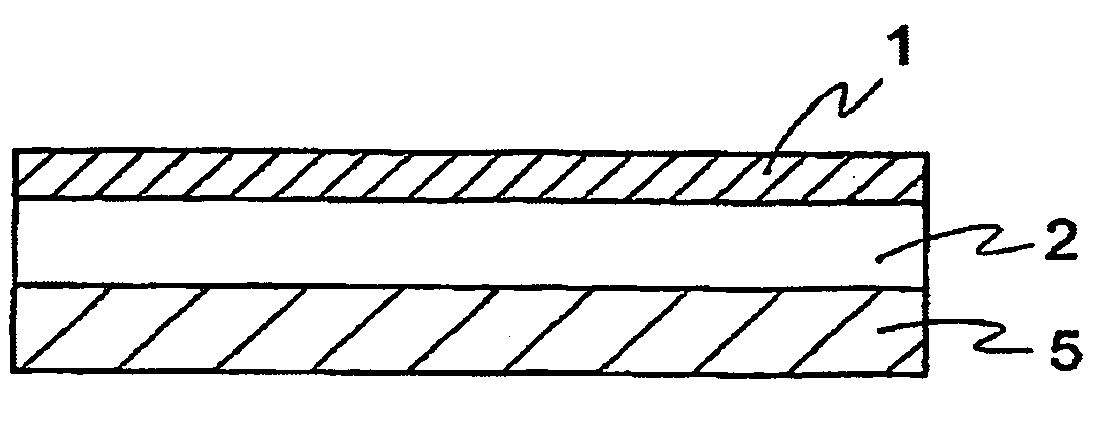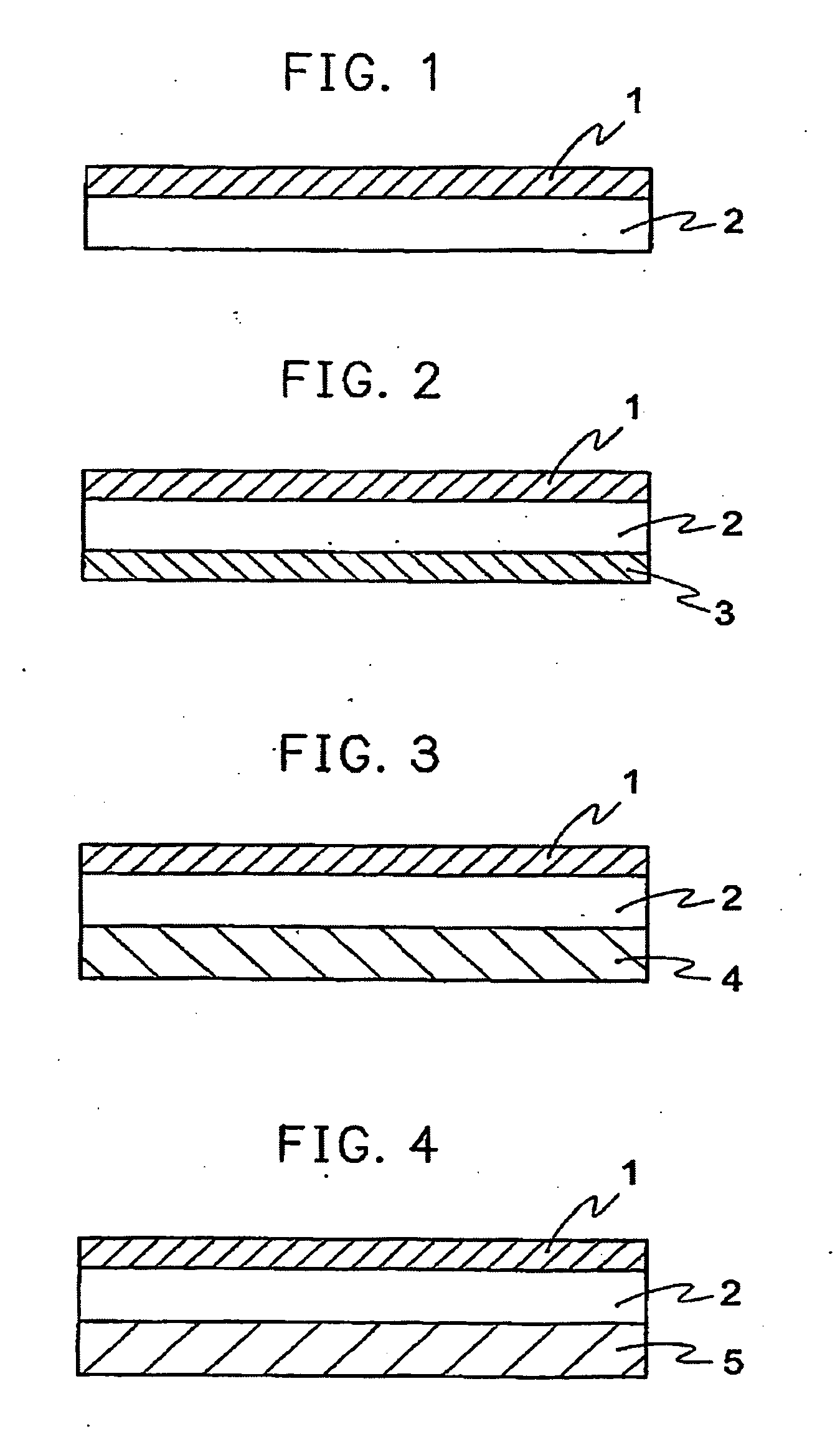Thermoplastic polyimide resin film, multilayer body and method for manufacturing printed wiring board composed of same
- Summary
- Abstract
- Description
- Claims
- Application Information
AI Technical Summary
Benefits of technology
Problems solved by technology
Method used
Image
Examples
examples 1 to 9
[0218] Each of the polyamic acid solutions prepared in Preparations X, Y, and Z was applied to one of the surfaces of each of the non-thermoplastic polyimide films A, B, and C of 25 μm in thickness formed in Preparations A, B, and C to form a laminate. The thickness of the thermoplastic polyimide layer was 3 μm, and a copper foil was placed on the thermoplastic polyimide layer and then laminated with a heat roll at a temperature of 340° C., a linear pressure of 20 kgf / cm, and a linear velocity 1.5 m / min. As the copper foil, a rolled copper foil, BHY-22B-T, of 18 μm in thickness (Rz=1.5 μm) manufactured by Japan Energy Co., Ltd. was used. Then, the laminated copper foil was completely removed using a hydrochloric acid / ferric chloride etchant to obtain a laminate comprising a surface-treated thermoplastic polyimide resin film according to the present invention. The surface roughness of the surface-treated film was measured.
[0219] Then, electroless copper plating and electrolytic copp...
examples 10 to 26
[0222] Experiment was carried out to confirm the effects of various surface treatments. The polyamic acid solution prepared in Preparation Y was applied to one of the surfaces of the non-thermoplastic polyimide film of 25 μm in thickness formed in Preparation B to form a laminate. The thickness of the thermoplastic polyimide layer was each of 1, 3, and 5 μm.
[0223] (1) Surface treatment with an electrolytic copper foil was performed by laminating an electrolytic copper foil, 3EC-VLP oil (thickness 18 μm, Rz=4.6 μm) manufactured by Mitsui Kinzoku K. K. by the same method as in Examples 1 to 9.
[0224] (2) Surface treatment with a permanganate was performed by the permanganate desmearing system (manufactured by Atotech K. K.) shown in the table below.
[0225]
TABLE 3processComposition of Reactive SolutionconditionSwellingSwelling Securigant P (※)500ml / L60° C.NaOH3g / l5 min.dipping(Washing)Micro-Concentrate Compact CP (※)550ml / L80° C.etchingNaOH40g / l5 min.dipping(Washing)RedutionReduction ...
examples 27 to 38
[0232] The polyamic acid solution prepared in Preparation Y was applied to both surfaces of each of the non-thermoplastic polyimide films of 7.5 μm, 12.5 μm, 25 μm, and 50 μm, respectively, in thickness formed in Preparation C of polyimide film to form laminates comprising thermoplastic polyimide layers having different thicknesses. Each of the thermoplastic polyimide layers was surface-treated using the same copper foil as in Examples 1 to 9, and the coefficient of thermal expansion was measured. Then, electroless plating and electrolytic plating were performed by the same method as in Examples 1 to 9 to form a copper layer having a thickness of 18 μm, and adhesive strength was measured at room temperature and after the pressure cooker test. The results are shown in Table 5. In experiment, the coefficient of thermal expansion of the non-thermoplastic film C was 12 ppm / ° C. The coefficient of thermal expansion was measured after formation of the thermoplastic layer, and evaluated on...
PUM
| Property | Measurement | Unit |
|---|---|---|
| Length | aaaaa | aaaaa |
| Length | aaaaa | aaaaa |
| Length | aaaaa | aaaaa |
Abstract
Description
Claims
Application Information
 Login to View More
Login to View More - Generate Ideas
- Intellectual Property
- Life Sciences
- Materials
- Tech Scout
- Unparalleled Data Quality
- Higher Quality Content
- 60% Fewer Hallucinations
Browse by: Latest US Patents, China's latest patents, Technical Efficacy Thesaurus, Application Domain, Technology Topic, Popular Technical Reports.
© 2025 PatSnap. All rights reserved.Legal|Privacy policy|Modern Slavery Act Transparency Statement|Sitemap|About US| Contact US: help@patsnap.com



